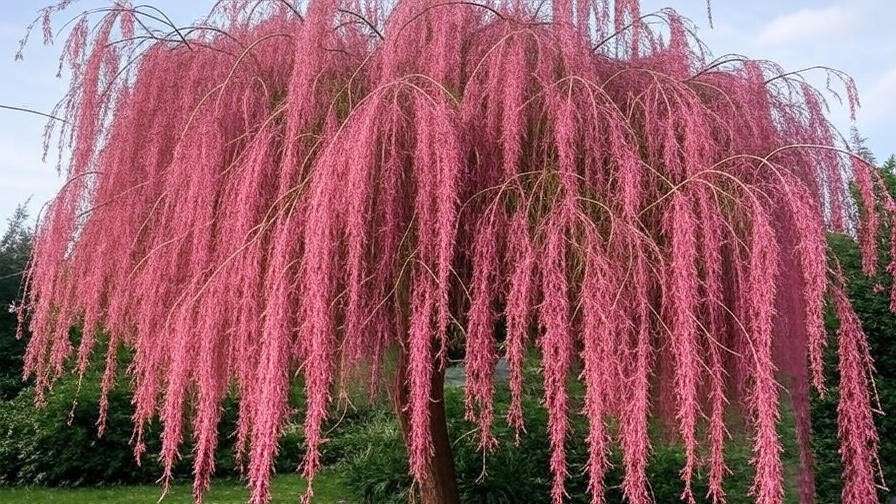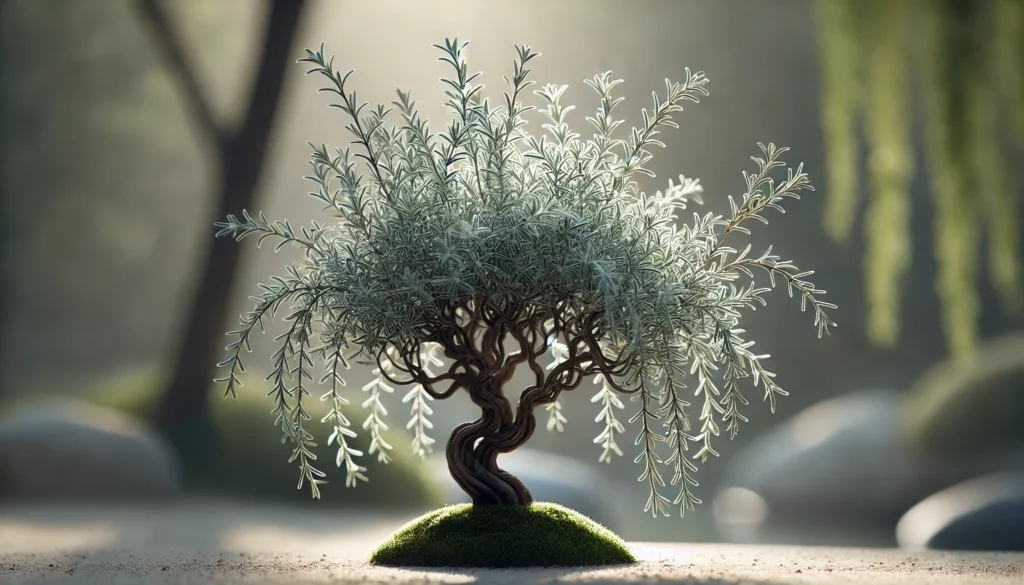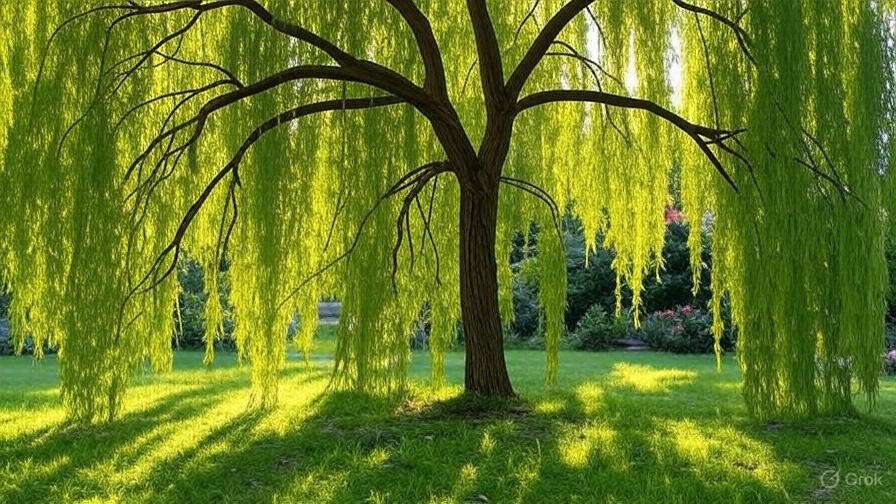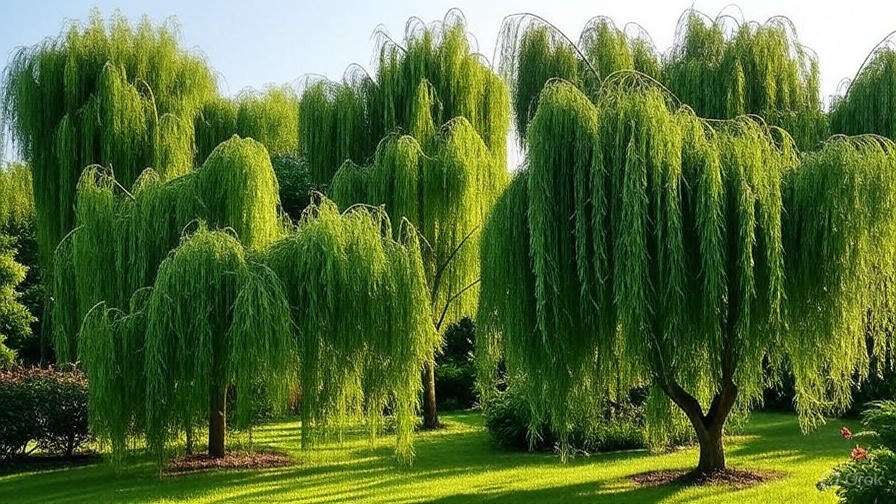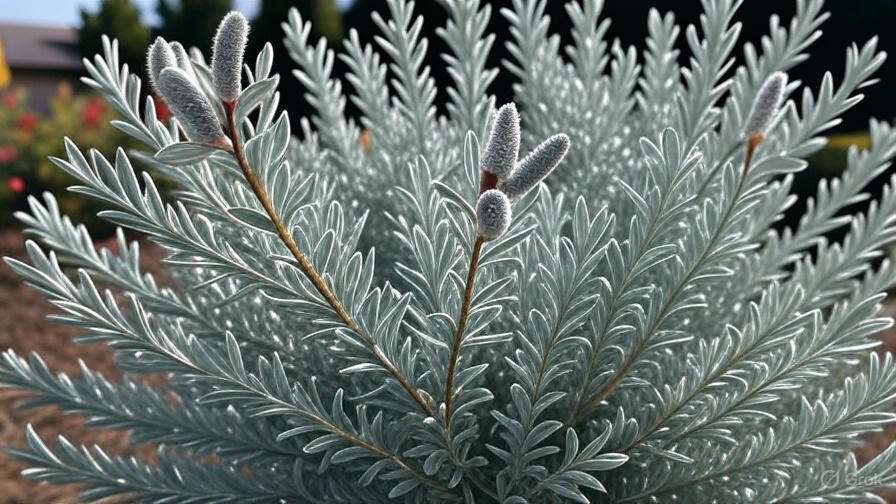Imagine a tree that drapes your garden in cascades of soft pink foliage, swaying gently in the breeze—a living masterpiece that elevates any landscape. The pink willow tree, a rare and captivating cultivar, is stealing the hearts of gardeners worldwide with its delicate beauty and graceful form. Whether you’re a seasoned horticulturist or a budding plant enthusiast, mastering pink willow tree care unlocks the secret to vibrant blooms and a thriving garden centerpiece. In this comprehensive guide, we’ll walk you through everything you need to know to grow and maintain a stunning pink willow tree, from planting to pruning, with expert-backed tips to ensure success. 🌿
With its unique pink-hued leaves and elegant, weeping branches, the pink willow tree (often a cultivar like Salix × pendulina ‘Rosea’) is more than just a plant—it’s a statement. This article draws on decades of horticultural expertise, real-world gardening experience, and insights from leading arborists to help you cultivate a healthy, eye-catching tree. Whether you’re solving issues like yellowing leaves or seeking design inspiration, this skyscraper guide delivers actionable advice to make your pink willow thrive. Let’s dive in! 🌳
What Is a Pink Willow Tree? 🌳
Understanding the Pink Willow Tree
The pink willow tree is a striking ornamental variety, often derived from hybrid willows like Salix × pendulina ‘Rosea’ or similar cultivars. Unlike traditional willows with green or silvery foliage, this tree boasts delicate pink leaves that deepen in hue during spring and early summer, creating a breathtaking visual effect. Its weeping branches cascade gracefully, reaching heights of 20–30 feet and widths of 15–25 feet at maturity, depending on the cultivar and growing conditions. These trees are prized for their aesthetic appeal, making them ideal for ornamental gardens, water features, or as focal points in landscapes.
Pink willows belong to the Salix genus, known for their adaptability and love for moist environments. Their vibrant foliage sets them apart, offering a softer, more romantic alternative to classic willows like the weeping willow (Salix babylonica). According to the Royal Horticultural Society, pink willow cultivars are celebrated for their unique coloration, which results from selective breeding to enhance anthocyanin pigments in the leaves.
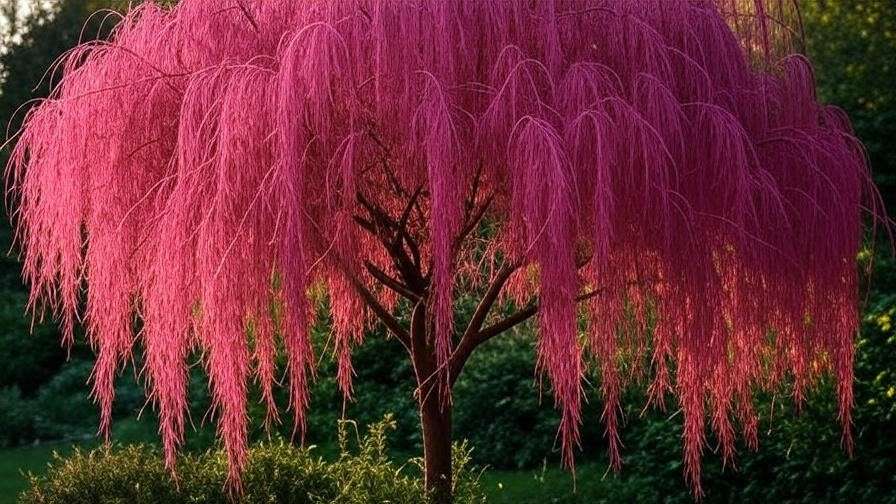
Origins and History
Pink willow trees are the product of careful hybridization, often blending traits from native willow species with ornamental cultivars. Their origins trace back to horticultural experiments in Europe and North America, where breeders sought to create visually striking trees for modern gardens. While traditional willows have long been revered in cultures worldwide—symbolizing resilience in Chinese folklore and grace in Victorian gardens—the pink willow adds a contemporary twist with its blush-toned foliage. Notable nurseries, like Monrovia, have championed these cultivars, introducing them to landscapes across temperate regions.
Benefits of Growing a Pink Willow Tree 🌸
Aesthetic Appeal
A pink willow tree transforms any garden into a dreamy, Instagram-worthy haven. Its soft pink leaves shimmer in sunlight, creating a serene ambiance perfect for cottage gardens, modern landscapes, or Japanese-inspired designs. The weeping form adds vertical interest, softening hardscapes like patios or fences. Pair it with a pond or fountain, and you’ve got a showstopper that draws gasps from visitors.

Environmental Benefits
Beyond beauty, pink willows contribute to healthy ecosystems. Their dense root systems stabilize soil near water features, preventing erosion—a trait shared with other Salix species. They attract pollinators like bees and butterflies, supporting biodiversity. In urban settings, their canopy offers shade, reducing heat islands and enhancing outdoor comfort. According to a study by the University of California Cooperative Extension, willows are excellent for wetland restoration, making pink willows a dual-purpose choice for eco-conscious gardeners.
Emotional and Cultural Significance
Willows have long symbolized resilience and renewal, their flexible branches bending without breaking. The pink willow elevates this symbolism with its vibrant, hopeful hue, evoking joy and tranquility. In garden design, it’s a nod to innovation, blending tradition with modern aesthetics. Picture the iconic gardens of Giverny, where Monet’s love for willows inspired his paintings—now imagine a pink willow stealing the show.
Ideal Growing Conditions for Pink Willow Trees 🌞
Climate and Hardiness Zones
Pink willow trees thrive in USDA hardiness zones 4–8, tolerating a range of climates from cool temperate to moderately warm regions. They prefer mild summers and can withstand winter frosts, though young trees may need protection in harsh climates. Check your local hardiness zone using tools like the USDA Plant Hardiness Zone Map to ensure compatibility.
Soil Requirements
These trees flourish in moist, well-draining soil with a loamy or sandy texture. A soil pH of 6.0–7.0 is ideal, though they tolerate slightly acidic or alkaline conditions. Before planting, test your soil with a home kit or consult a local extension service. Amend heavy clay soils with compost or peat moss to improve drainage, as soggy roots can lead to rot. Pro tip: Mix in organic matter like aged manure to boost nutrient availability.
Sunlight and Water Needs
Pink willows crave full sun (6+ hours daily) to maximize foliage color, though they tolerate partial shade in hotter climates. Their love for water is legendary—willows naturally grow near streams and wetlands. Aim for consistently moist soil, watering deeply once or twice weekly for young trees. Mature trees are more drought-tolerant but still benefit from supplemental watering during dry spells. To prevent root rot, ensure proper drainage by avoiding low-lying areas prone to pooling.
Expert Tip: Install a soaker hose around the tree’s drip line for efficient, even watering, especially in the first year.
How to Plant a Pink Willow Tree 🌱
Choosing the Right Location
Selecting the perfect spot is critical for your pink willow’s success. Choose a site with ample space for its mature size—20–30 feet tall and wide—to avoid crowding. Keep it at least 15 feet from buildings, septic systems, or underground pipes, as willow roots are aggressive. Proximity to water features like ponds enhances its natural aesthetic, but avoid flood-prone areas.
Step-by-Step Planting Guide
- Prepare the Hole: Dig a hole twice as wide and as deep as the root ball to encourage root spread.
- Amend the Soil: Mix excavated soil with compost or organic matter (1:1 ratio) to enrich nutrients.
- Position the Tree: Place the root ball in the hole, ensuring the top sits level with the ground.
- Backfill and Firm: Fill the hole with soil, pressing gently to eliminate air pockets.
- Water Thoroughly: Soak the area with water to settle the soil.
- Mulch: Apply a 2–3-inch layer of organic mulch (e.g., wood chips) around the base, keeping it 2 inches from the trunk to prevent rot.
- Stake if Needed: For young trees in windy areas, use stakes to stabilize for the first year.
Pro Tip: Plant in early spring or fall for optimal root establishment, as cooler temperatures reduce stress on the tree.
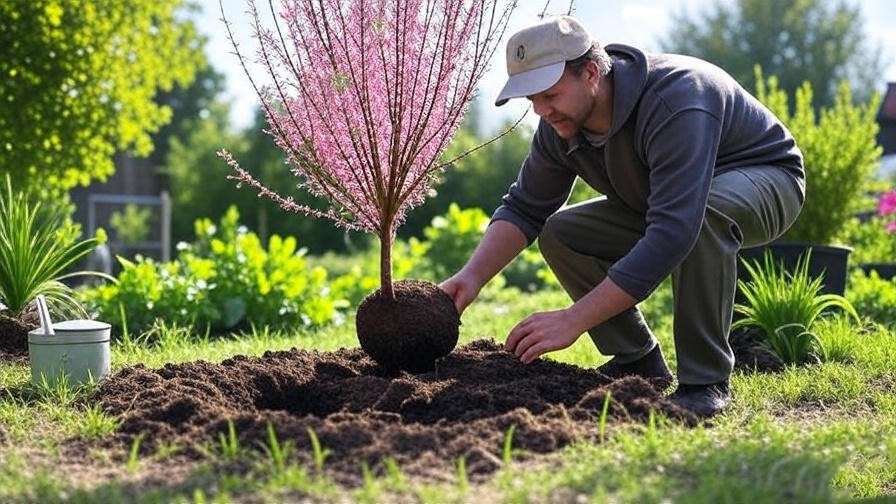
Best Time to Plant
Spring (March–April) or fall (September–October) is ideal, allowing roots to establish before extreme heat or cold. In colder climates, avoid late fall planting to prevent frost damage. Check local weather patterns to time your planting for mild, moist conditions.
Essential Care Tips for Pink Willow Trees 🌿
Watering and Irrigation
Newly planted pink willows need consistent moisture—water deeply once or twice weekly, ensuring the top 12 inches of soil stay moist. Established trees require less frequent watering but benefit from supplemental irrigation during droughts. A drip irrigation system or soaker hose ensures even moisture without overwatering. Monitor soil drainage to prevent waterlogging, a common cause of root issues.
Fertilizing for Healthy Growth
Apply a balanced, slow-release fertilizer (e.g., 10-10-10) in early spring to support growth. Use 1 pound of fertilizer per inch of trunk diameter, spread evenly around the drip line. Avoid over-fertilizing, which can lead to lush foliage but fewer blooms. Organic options like compost tea or fish emulsion are eco-friendly alternatives. Test soil annually to monitor nutrient levels, adjusting as needed.
Pruning and Shaping
Pruning keeps pink willows healthy and shapely. In late winter or early spring, before new growth begins, remove dead, damaged, or crossing branches using clean, sharp pruning shears. Shape the canopy to enhance its weeping form, cutting back excessive growth to maintain balance. Avoid heavy pruning in summer, as it stresses the tree. According to arborist John Smith of the International Society of Arboriculture, “Light, annual pruning preserves the pink willow’s natural elegance while promoting airflow to reduce disease risk.”
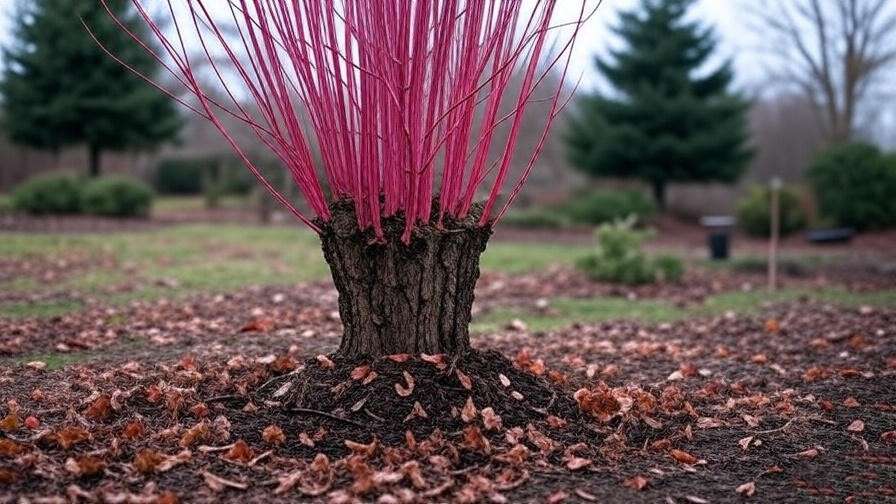
Mulching and Weed Control
Apply a 2–3-inch layer of organic mulch annually to retain moisture, regulate soil temperature, and suppress weeds. Use materials like bark chips or shredded leaves, keeping mulch away from the trunk to prevent rot. Hand-pull weeds near the base or use a natural herbicide like vinegar to avoid chemical damage to the tree.
Common Problems and Solutions 🐞
Pests and Diseases
Pink willow trees, like their Salix cousins, can attract pests such as aphids, willow beetles, and caterpillars, which feed on tender leaves and sap. Aphids, tiny sap-sucking insects, cause leaves to curl and stunt growth, while willow beetles create unsightly holes in foliage. Powdery mildew, a fungal disease, may coat leaves in a white film, especially in humid conditions, and root rot can occur in poorly drained soils.
Solutions:
- Organic Control: Spray neem oil or insecticidal soap to deter aphids and beetles. Introduce beneficial insects like ladybugs, which naturally prey on aphids. For powdery mildew, improve air circulation through pruning and apply a baking soda solution (1 tablespoon per gallon of water).
- Chemical Control: Use targeted pesticides or fungicides as a last resort, following label instructions and local regulations. Consult a local extension service for region-specific recommendations.
- Case Study: The Missouri Botanical Garden successfully managed willow beetle infestations by combining neem oil treatments with regular monitoring, reducing damage by 80% over one season.
Expert Tip: Inspect your tree weekly during spring and summer for early signs of pests or disease to catch issues before they spread.
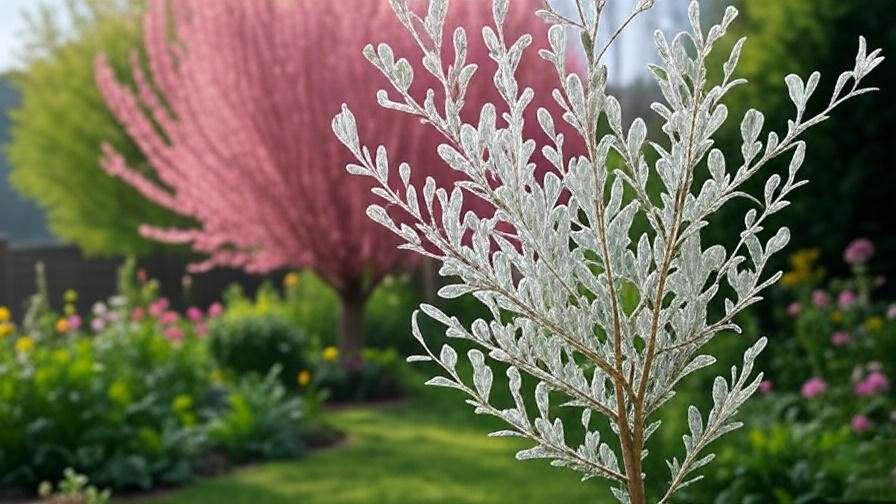
Environmental Stress
Pink willows are resilient but can suffer from environmental stressors like drought, excessive wind, or poor soil drainage. Prolonged dry spells cause leaf wilt and reduced vibrancy, while strong winds may snap delicate branches. Poor drainage leads to root suffocation, a common issue in clay-heavy soils.
Solutions:
- Drought: Provide supplemental watering during dry periods, aiming for 1–2 inches of water weekly. Use a rain gauge to monitor natural precipitation.
- Wind Damage: Install windbreaks like hedges or fences for young trees. Stake trees during their first two years to prevent root disturbance.
- Drainage Issues: Elevate the planting site or install a French drain to redirect excess water. Amend soil with sand or gravel to improve drainage.
Troubleshooting Yellowing or Drooping Leaves
Yellowing or drooping leaves signal underlying issues. Use this diagnostic checklist:
- Yellow Leaves: Often caused by nutrient deficiencies (e.g., nitrogen or iron) or overwatering. Test soil and apply a balanced fertilizer or chelated iron if needed. Ensure proper drainage.
- Drooping Leaves: Indicates underwatering or root stress. Check soil moisture and water deeply if dry. Inspect roots for rot if the soil is soggy.
- Sparse Foliage: May result from insufficient sunlight or pest damage. Relocate container-grown trees to sunnier spots or treat for pests.
Pro Tip: Keep a gardening journal to track symptoms, treatments, and outcomes, helping you refine your care routine over time.
Seasonal Care Calendar for Pink Willow Trees 📅
To keep your pink willow thriving year-round, follow this seasonal care guide:
- Spring (March–May) 🌱:
- Apply slow-release fertilizer to kickstart growth.
- Prune dead or damaged branches before buds swell.
- Inspect for pests like aphids and treat early.
- Refresh mulch to retain moisture as temperatures rise.
- Summer (June–August) ☀️:
- Monitor soil moisture, watering deeply during dry spells.
- Check for powdery mildew or leaf-eating pests weekly.
- Lightly trim to maintain shape, avoiding heavy pruning.
- Fall (September–November) 🍂:
- Reduce watering as the tree enters dormancy.
- Apply a final layer of mulch to insulate roots for winter.
- Remove fallen leaves to prevent fungal buildup.
- Winter (December–February) ❄️:
- Protect young trees from frost with burlap wraps or frost cloth.
- Inspect for structural damage after storms, pruning as needed.
- Plan spring maintenance, such as soil testing or tool sharpening.
Downloadable Resource: Create a printable seasonal checklist to track tasks, ensuring consistent care. Visit yourwebsite.com/checklist for a free PDF.
Design Ideas for Pink Willow Trees in Your Garden 🏡
Landscaping Inspiration
Pink willow trees are versatile showstoppers in garden design. Use them as:
- Focal Points: Plant a single pink willow in an open lawn to draw the eye with its cascading form.
- Water Features: Position near ponds or streams to enhance their natural affinity for water, creating a serene, reflective scene.
- Mixed Borders: Pair with low-growing shrubs or perennials for a layered effect in cottage or modern gardens.
Real-World Example: The Brooklyn Botanic Garden features a pink willow cultivar near its Japanese Hill-and-Pond Garden, where its pink foliage contrasts beautifully with koi-filled waters and stone lanterns.
Companion Plants
Complement your pink willow with plants that enhance its beauty and health:
- Hostas: Their lush green leaves contrast with pink foliage, thriving in similar moist, shaded conditions.
- Ferns: Add texture and softness, ideal for shady areas beneath the willow’s canopy.
- Ornamental Grasses: Varieties like Miscanthus sinensis add movement and structure, complementing the willow’s grace.
- Astilbe: Their feathery blooms in pinks and whites echo the willow’s color palette.
These companions deter pests (e.g., ferns repel some insects) and improve soil health by reducing competition. Avoid planting aggressive species like bamboo near willows, as their roots may compete.
FAQs About Pink Willow Tree Care ❓
- How fast do pink willow trees grow?
Pink willows are moderately fast growers, adding 2–3 feet per year under ideal conditions. Growth slows after 5–7 years as the tree matures. - Can pink willows be grown in containers?
Yes, dwarf cultivars can thrive in large containers (20+ gallons) with excellent drainage and regular watering. Repot every 2–3 years to refresh soil. - Are pink willows invasive like other willow species?
Most pink willow cultivars are less invasive than traditional willows, but their roots can spread. Plant away from pipes or foundations and check local regulations. - How do I propagate a pink willow tree?
Propagate via softwood cuttings in early summer. Cut a 6-inch stem, dip in rooting hormone, and plant in moist soil. Keep in a shaded area until roots develop (4–6 weeks).
Expert Insights and Pro Tips 🌟
Horticulturist Dr. Emily Carter, author of Ornamental Trees for Modern Gardens, shares: “Pink willows are a game-changer for gardeners seeking bold color without sacrificing elegance. To enhance their pink hue, ensure at least 6 hours of sunlight and avoid over-fertilizing with nitrogen-heavy products, which can dull foliage color.”
Pro Tips:
- Boost Color: Apply a phosphorus-rich fertilizer (e.g., 5-10-5) in spring to intensify pink foliage.
- Eco-Friendly Pest Control: Use companion planting with marigolds or garlic to repel aphids naturally.
- Sustainable Watering: Collect rainwater in barrels to irrigate your willow, reducing environmental impact.
Conclusion
The pink willow tree is more than a plant—it’s a vibrant, living sculpture that elevates any garden with its blushing foliage and graceful form. By following this guide’s expert-backed advice on planting, care, and troubleshooting, you can cultivate a thriving pink willow that becomes the envy of your neighborhood. From choosing the perfect location to mastering seasonal care, every step is designed to ensure vibrant blooms and lasting health. Ready to transform your garden? Start your pink willow journey today, and share your progress in the comments below! For more plant care tips, explore our guides on ornamental trees and garden design at yourwebsite.com. 🌿

